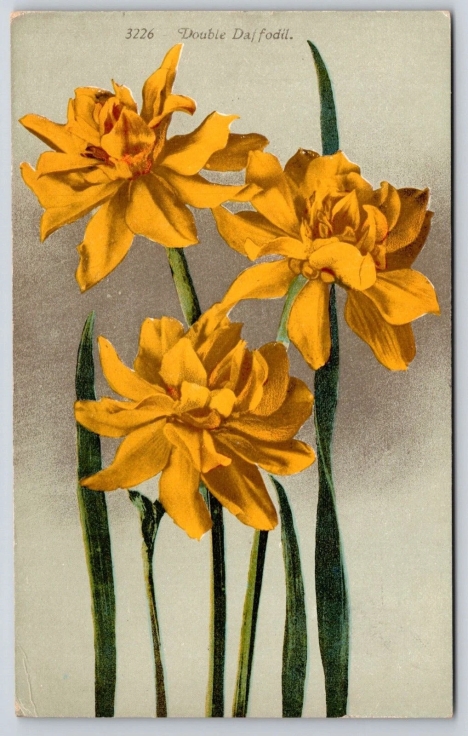News: BTA AGM 2025 and display
22/06/2025 @ 1:33pm
The 2025 Annual General Meeting was held on 14th June. After the formal business our Chairman Barry Stagg gave a display on "Daffodils".
 Many thematic collectors are drawn to their subject because of interests elsewhere, and Barry is no exception. He explained that not only does he grow and show daffodils, with a garden and allotment to cultivate, he also judges them at competitions. No wonder he was drawn into telling their story.
Many thematic collectors are drawn to their subject because of interests elsewhere, and Barry is no exception. He explained that not only does he grow and show daffodils, with a garden and allotment to cultivate, he also judges them at competitions. No wonder he was drawn into telling their story.
The display was in two parts, firstly postcards and then his ‘collection’ of anything daffodil-themed. It seems there are around 16,000 to 20,000 daffodil cultivars bred today, making it a huge business, with more daffodils bought in the UK than anywhere else in the world. And they’ve been around a long time, originating as wild flowers in the Atlas Mountains, and were first been imported into this country in the Iron Age, or perhaps even the Bronze Age, following trade routes from what is now Spain to Wales. To this day daffodils flower in the frounds of what were Roman forts.
The real craze for breeding daffodils began in mid-Victorian times when there was a growing understanding of heredity and genetics. Vicars were examples of laymen with some leisure time who experimented with hybridisation, creating new varieties of daffodil. It’s why churchyards and vicarages often have lovely displays of them come springtime. The Rev. William Herbert is known as the first amateur plant hybridiser, and between 1882 and 1923 the Rev. George Engleheart registered 720 new daffodil varieties.
They might be pretty, but they can be dangerous! They will make humans sick, and so until mid-Victorian times they were used medicinally as an emetic. Worse, they can be fatally poisonous to equines - horses, donkeys and mules. It’s why you never see them in farmers’ fields, they’ve all been ripped out. And don’t use them in mixed bunches if you are into flower arrangement, their sap will kill other cut flowers, being as Barry put it “the thugs of the vase”.
Some quick facts: the terms ‘daffodil’ and ‘narcissus’ both mean the same thing; there are thirteen different divisions of daffodils; a daffodil must have six petals; there are only six colours of daffodil: red, yellow, orange, green, pink and white. And the first appearance of a daffodil on a GB stamp was the George VI definitives with the frames designed by Eric Gill, where they appear in the bottom left corner as the national flower of Wales.
Out of all the varieties of daffodil, Barry’s personal favourite is Division 4, which have double petals and/or a double corona. This fascinating display, on a subject which by its nature has to be attractive on the page, ended with an impossibility: an early twentieth century postcard showing an idyllic cottage garden with a profusion of flowering plants including daffodils (spring flowering of course), but also sunflowers, which don’t bloom until August or later.
Comments
Log in or Sign up to post comments

No Comments have been added yet.